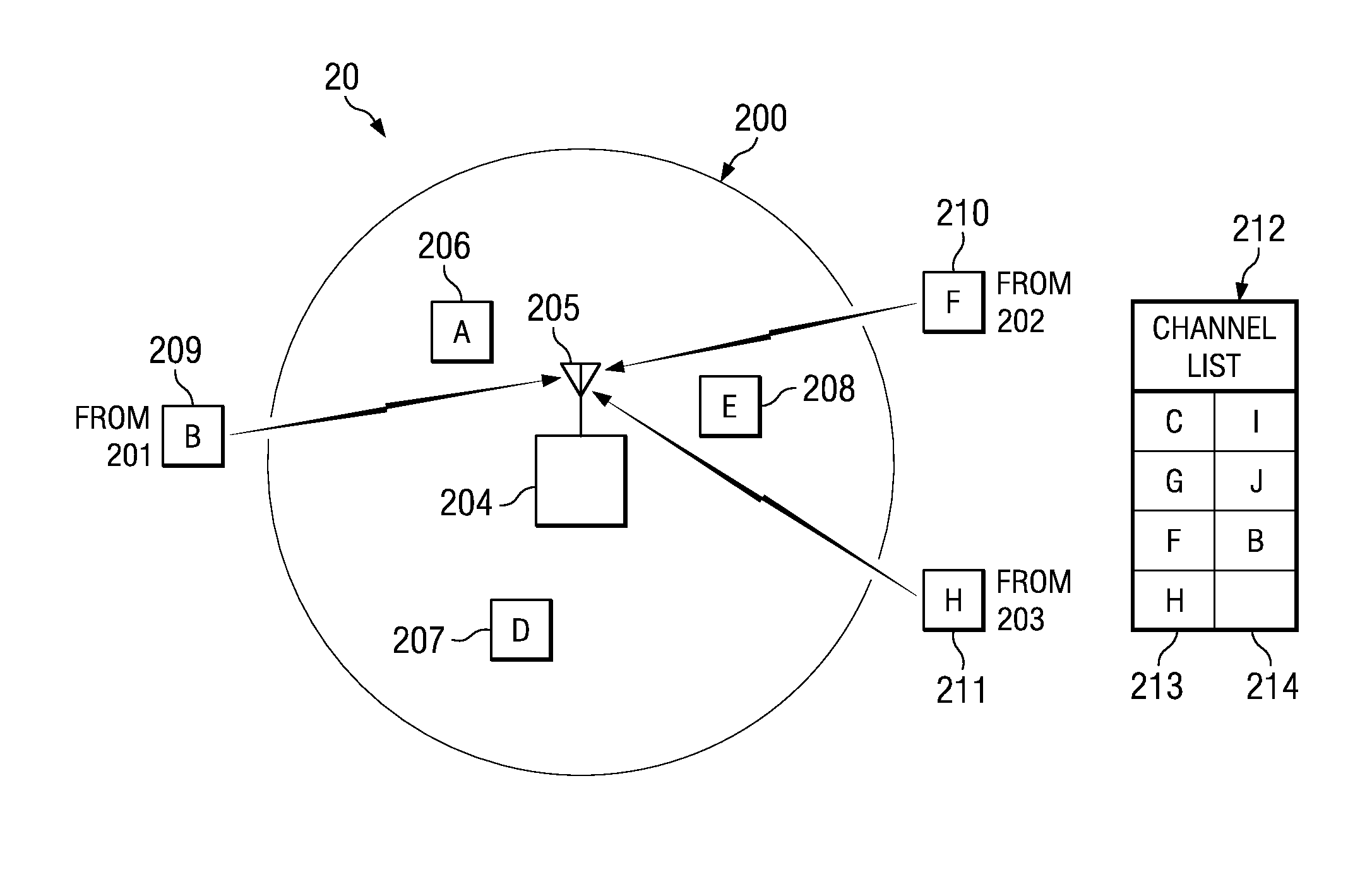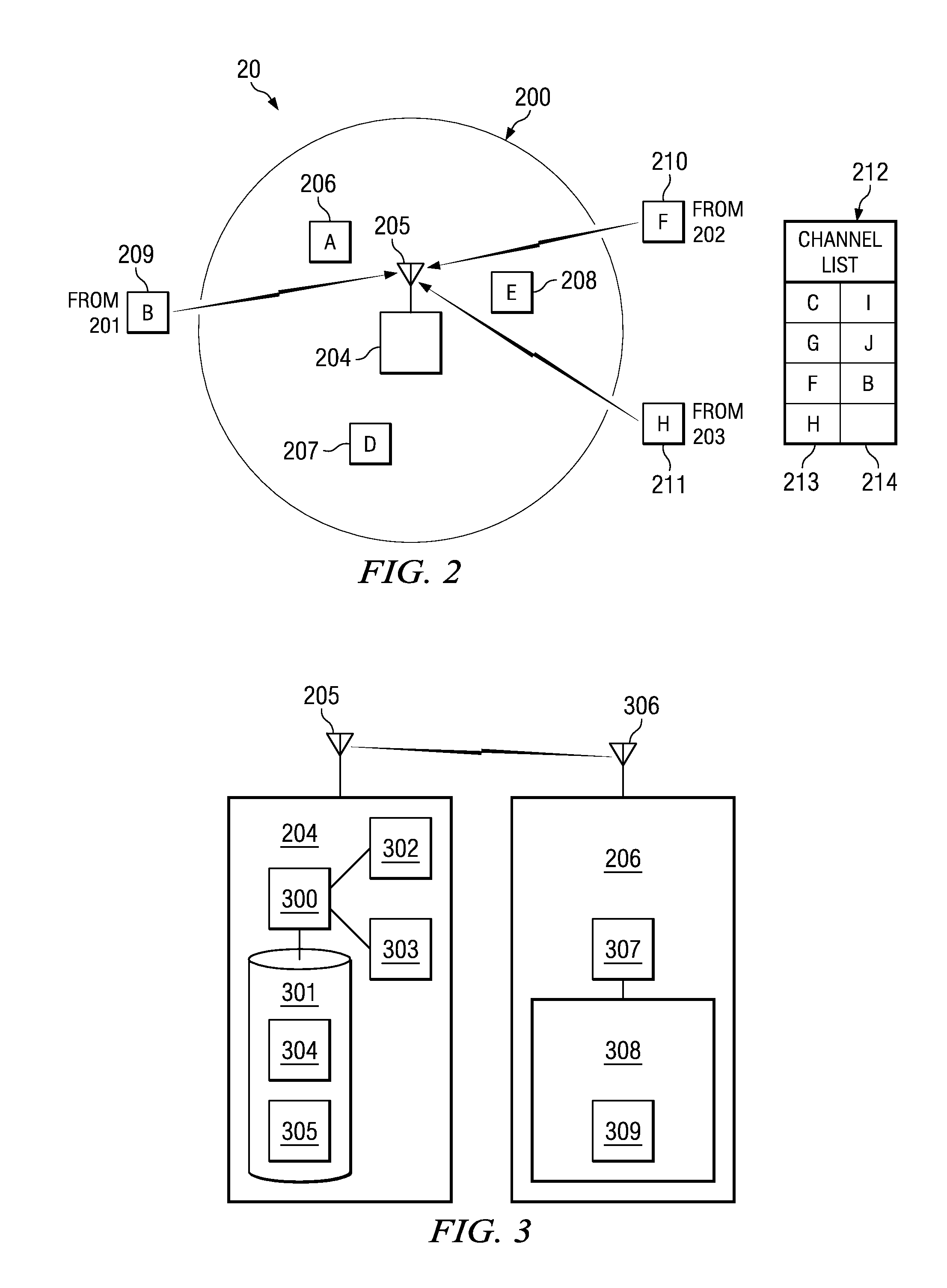Intelligent Sector Channel Allocation
a channel allocation and intelligent technology, applied in the field of intelligent channel allocation, can solve the problems of delayed paging, channel collision between cells, and slow detection by access nodes (an) of call requests
- Summary
- Abstract
- Description
- Claims
- Application Information
AI Technical Summary
Benefits of technology
Problems solved by technology
Method used
Image
Examples
Embodiment Construction
[0013]The making and using of the presently preferred embodiments are discussed in detail below. It should be appreciated, however, that the present invention provides many applicable inventive concepts that can be embodied in a wide variety of specific contexts. The specific embodiments discussed are merely illustrative of specific ways to make and use the invention, and do not limit the scope of the invention.
[0014]The present invention will be described with respect to preferred embodiments in a specific context, namely a time division multiple access (TDMA) wireless network. The invention may also be applied, however, to other types of wireless networks.
[0015]With reference now to FIG. 1A, cells 100-103 are shown in network 10 configured according to one embodiment of the present invention. Ten channels, A-J, are available to each of cells 100-103 for assignment to various mobile devices for communication. At a first time, t1, cell 100 is serving mobile devices 108 and 109 from ...
PUM
 Login to View More
Login to View More Abstract
Description
Claims
Application Information
 Login to View More
Login to View More - R&D
- Intellectual Property
- Life Sciences
- Materials
- Tech Scout
- Unparalleled Data Quality
- Higher Quality Content
- 60% Fewer Hallucinations
Browse by: Latest US Patents, China's latest patents, Technical Efficacy Thesaurus, Application Domain, Technology Topic, Popular Technical Reports.
© 2025 PatSnap. All rights reserved.Legal|Privacy policy|Modern Slavery Act Transparency Statement|Sitemap|About US| Contact US: help@patsnap.com



